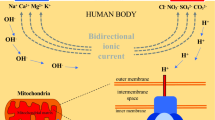Abstract
The energy cost of the onset and relaxation phases of cardiac isometric contractions has been investigated by ergometer controlled-length releases occurring at different times during the contraction cycle, to test the hypothesis that the energy cost of relaxation is normally small. Energy flux has been measured myothermically in 20 or 30 contractions of rabbit papillary muscles. The ergometer releases took place after different delays, starting during the latency period and incrementing in 50 ms steps, until eventually, releases were occurring late into the relaxation phase. The release step was kept constant and of a magnitude sufficient to prevent significant redevelopment of active stress at any release interval. The rate of release was several times greater than the maximum shortening velocity of the papillary muscle preparations. The heat production in each train of contractions was measured, but in order to estimate the total energy output, the elastic energy in the muscle-lever system which was removed by the ergometer release had to be added to the heat. This was estimated by integration of the stress-strain relationship found for each muscle. In normal animals the contraction peak, at 27°C and a 1.0 Hz stimulus rate, was located between the 215 and 265 ms release times, at which point the total energy flux was estimated to be 80%–90% of that measured in a normal isometric contraction. Additional experiments were performed in a group of volume-overloaded hearts and the data were compared with results from sham-operated controls. In hypertrophic muscles the contraction peak was located between 265 and 315 ms, and at such times the energy flux was about 75% of that measured in unreleased contractions. These results imply that 10% to 25% of the energy measured in a twitch contraction is used by processes occurring after the contraction peak. Some possible physiological reasons for this are considered.
Similar content being viewed by others
References
Monroe RG (1964) Myocardial oxygen consumption during ventricular contraction and relaxation. Circ Res 14: 294–300
Elzinga G, Duwel CMB, Mast F, Westerhof N (1987) Mechanical determinants of myocardial energy turnover. Basic Res Cardiol 82 (Suppl. 2): 51–59
Duwel CMB, Westerhof N (1988) Feline left ventricular oxygen consumption is not affected by volume expansion, ejection or redevelopment of pressure during relaxation. Pflugers Arch 412: 409–416
Cooper G (1979) Myocardial energetics during isometric twitch contractions of cat papillary muscle. Am J Physiol 236: H244-H253
Hisano R, Cooper G (1987) Correlation of force-length area with oxygen consumption in ferret papillary muscle. Circ Res 61: 318–328
Suga H, Sagawa K, Shoukas AA (1973) Load independence of the instantaneous pressure-volume ratio of the canine left ventricle and effects of epinephrine and heart rate on the ratio. Circ Res 32: 314–322
Khalafbeigui F, Suga H, Sagawa K (1979) Left ventricular systolic pressure-volume area correlates with oxygen consumption. Am J Physiol 237: H566-H569
Yasumura Y, Nozawa T, Futaki S, Tanaka N, Suga H (1989) Time-invariant oxygen cost of mechanical energy in dog left ventricle: consistency and inconsistency of time-varying elastance model with myocardial energetics. Circ Res 64: 764–778
Hill AV (1964) The effect of tension in prolonging the active state in a twitch. Proc R Soc Lond [Biol] 159: 589–595
Gibbs CL (1978) Cardiac energetics. Physiol Rev 58: 174–254
Gibbs CL, Gibson WR (1970) Energy production in cardiac isotonic contractions. J Gen Physiol 56: 732–750
Loiselle DS, Gibbs CL (1979) Species differences in cardiac energetics. Am J Physiol 237: H90-H98
Loiselle DS (1985) The rate of resting heat production of rat papillary muscle. Pflugers Arch 405: 155–162
Ricchiuti NV, Mommaerts WFHM (1964) Technique for myothermic measurements. Physiologist 8: 259
Gibbs CL, Loiselle DS, Wendt IR (1988) Activation heat in cardiac muscle. J Physiol (Lond) 395: 115–130
Hill AV (1950) The series elastic component of muscle. Proc R Soc Lond [Biol] 137: 273–280
Bahler AS, Epstein F, Sonnenblick E (1974) Series elasticity of in vitro mammalian cardiac muscle. Am J Physiol 227: 794–800
Woledge RC (1963) Heat production and energy liberation in the early part of a muscular contraction. J Physiol (Lond) 166: 211–224
Chapman JB, Gibbs CL, Loiselle DS (1982) Myothermic polarographic and fluorometric data from mammalian muscle. Fed Proc 41: 176–184
Suga H (1979) Total mechanical energy of a ventricle model and cardiac oxygen consumption. Am J Physiol 236: H498-H505
Gibbs CL (1987) Cardiac energetics and the Fenn effect. Basic Res Cardiol 82 (Suppl. 2): 61–68
Allen DG, Kurihara S (1982) The effects of muscle length on intracellular calcium transients in mammalian cardiac muscle. J Physiol (Lond) 327: 79–94
Endoh M, Blinks JR (1988) Actions of sympathomimetic amines on the Ca2+ transients and contractions of rabbit myocardium: reciprocal changes in myofibrillar responsiveness to Ca2+ mediated throughα- andβ-adrenoreceptors. Circ Res 62: 247–265
Hoh JFY, Rossmanith GH, Kwan LJ, Hamilton A (1988) Adrenaline increases the rate of cycling of crossbridges in rat cardiac muscle as measured by pseudo-random binary noise modulated perturbation analysis. Circ Res 62: 452–461
Suga H, Nozawa T, Yasumura Y, Futaki S, Ohgoshi Y, Yaku H, Goto Y (1990) Force-time integral does not improve predictability of cardiac O2 consumption from pressure-volume area (PVA) in dog left ventricle. Heart Vessels 5/3: 152–158
Author information
Authors and Affiliations
Rights and permissions
About this article
Cite this article
Gibbs, C.L., Wendt, I.R., Kotsanas, G. et al. The energy cost of relaxation in control and hypertrophic rabbit papillary muscles. Heart Vessels 5, 198–205 (1990). https://doi.org/10.1007/BF02058690
Received:
Revised:
Accepted:
Issue Date:
DOI: https://doi.org/10.1007/BF02058690




